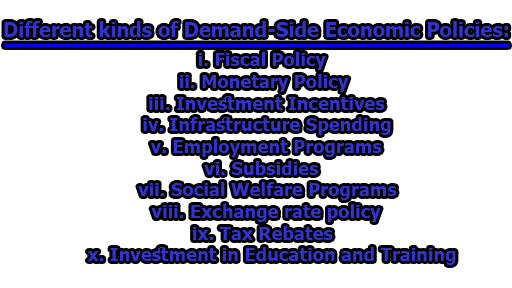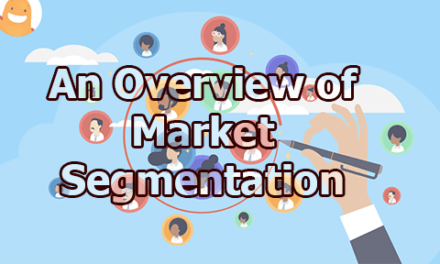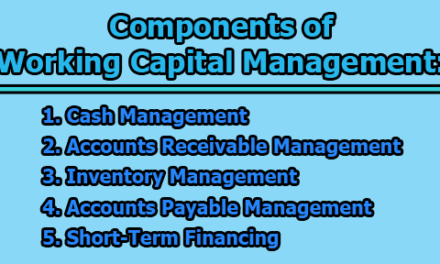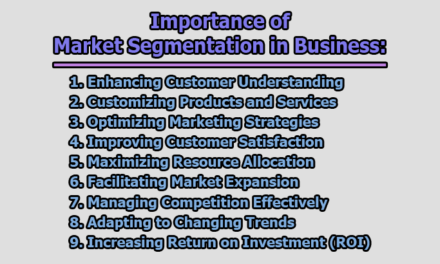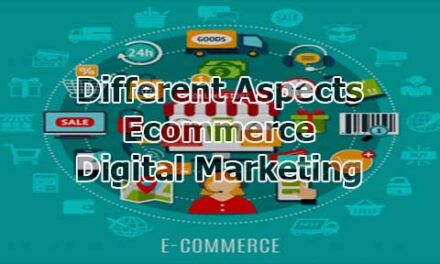Demand-side and supply-side economics are two competing economic theories that offer different solutions to promoting economic growth and addressing economic challenges. Some economists argue that a balance between demand-side and supply-side policies is necessary for achieving long-term economic growth and stability. In the rest of this article, we are going to know about demand-side and supply-side economics, different kinds of Demand-Side Economic Policies, and Demand-side vs. Supply-side Economics.
Demand-side Economics:
Demand-side economics, also known as Keynesian economics, is a macroeconomic theory that focuses on the role of aggregate demand in shaping economic growth and stability. It is based on the ideas of British economist John Maynard Keynes, who argued that government intervention is necessary to stabilize the economy during periods of recession or high unemployment.
According to demand-side economics, economic growth is driven by consumer spending, business investment, and government spending. During times of recession, when consumer and business spending decline, the government can use fiscal policy, such as increasing government spending and cutting taxes, to boost demand and stimulate economic activity. This is based on the idea that increased demand will lead to increased production, which in turn will lead to job creation and economic growth.
Demand-side economics also emphasizes the importance of monetary policy, which is controlled by central banks. By adjusting interest rates, central banks can influence the borrowing and spending decisions of consumers and businesses, thereby affecting overall demand in the economy.
Critics of demand-side economics argue that government intervention can lead to inefficiencies and distortions in the market and that excessive government spending can lead to inflation and a loss of economic freedom. However, proponents argue that demand-side policies are necessary to stabilize the economy during periods of recession and promote sustainable economic growth.
Supply-side Economics:
Supply-side economics is an economic theory that emphasizes increasing the supply of goods and services in an economy as a means of promoting economic growth and prosperity. It is based on the idea that economic growth can be achieved by reducing barriers to the production and supply of goods and services, which in turn will lead to greater investment, job creation, and higher overall economic output.
Supply-side economics holds that reducing taxes and regulations on businesses and individuals can encourage investment and production, leading to increased economic growth. The theory suggests that lower tax rates, particularly for high-income earners, can incentivize businesses to invest more in capital and create jobs, leading to increased productivity and economic growth.
Supply-side economics also emphasizes the importance of reducing government spending, as excessive government spending can lead to higher taxes, increased regulation, and inflation, which can hinder economic growth.
Critics of supply-side economics argue that it primarily benefits the wealthy and increases income inequality and that reducing taxes and regulations on businesses does not necessarily lead to increased investment or job creation. Additionally, some economists argue that demand-side policies, such as government spending and investment in infrastructure, may be more effective in promoting economic growth and reducing inequality.
Different kinds of Demand-Side Economic Policies:
Demand-side economic policies are government actions aimed at influencing consumer spending and business investment to stimulate economic growth. The following are some different kinds of demand-side economic policies:
i. Fiscal Policy: Fiscal policy involves changes in government spending and taxation to stimulate aggregate demand. When the government increases spending or cuts taxes, it puts more money in the hands of consumers, which can increase their spending and boost economic growth.
ii. Monetary Policy: Monetary policy involves changes in the money supply and interest rates to influence aggregate demand. When the central bank lowers interest rates or increases the money supply, it makes borrowing cheaper and puts more money in the hands of consumers, which can increase their spending and boost economic growth.
iii. Investment Incentives: Investment incentives are policies designed to encourage businesses to invest in new projects or expand their operations. For example, the government may offer tax breaks or subsidies for businesses that invest in certain industries or regions.
iv. Infrastructure Spending: Infrastructure spending involves government investment in projects like roads, bridges, and public transportation. These investments can stimulate economic growth by creating jobs and making it easier for people to travel and do business.
v. Employment Programs: Employment programs are policies designed to help people find jobs or stay employed. For example, the government may offer training programs, job placement services, or subsidies for businesses that hire unemployed workers.
vi. Subsidies: These are financial incentives given by the government to businesses or individuals to encourage certain behaviors. For example, a subsidy might be given to a company to produce a particular product, which can boost demand for that product.
vii. Social Welfare Programs: Social welfare programs are policies designed to provide support to low-income households. For example, the government may offer food stamps, housing subsidies, or cash assistance to help people afford basic necessities. These programs can help boost consumer spending and stimulate economic growth.
viii. Exchange rate policy: This refers to government policies related to the value of a country’s currency. For example, a government might devalue its currency to make its exports more competitive on the global market, which can boost demand for those exports.
ix. Tax Rebates: Governments can offer tax rebates to consumers to encourage spending. Tax rebates can come in the form of direct payments or tax credits.
x. Investment in Education and Training: Governments can invest in education and training programs to help workers acquire new skills and become more employable. This can help boost demand for certain products and services in the long term.
All of these policies are aimed at stimulating demand and boosting economic growth, but they differ in their focus and approach. Each policy has its own strengths and weaknesses, and policymakers must carefully consider the trade-offs of each policy when choosing which ones to implement.
Demand-side vs. Supply-side Economics:
Some of the key differences between demand-side and supply-side economics are the following:
| Key Points | Demand-Side Economics | Supply-Side Economics |
| Focus | Consumer demand | Supply of goods and services |
| Policy Goals | Increase consumer spending, job creation, economic growth | Increase production, investment, job creation, and economic growth |
| Government Role | Active involvement, government spending, transfer payments, tax cuts for lower-income individuals | Limited involvement, tax cuts for businesses and high-income individuals, reduced regulation, investment in infrastructure |
| Inflation | May increase with increased spending | May decrease with increased productivity and an increased supply of goods and services |
| Theory of Economic Growth | Investment in productive capacity | Investment in innovation and productivity |
| Income Inequality | Seeks to reduce inequality | May increase inequality |
| Criticisms | Can lead to inflation, may not address underlying structural problems | May primarily benefit the wealthy, but may not stimulate economic growth as promised |
It’s important to note that these are just generalizations and that there are often differences between demand-side and supply-side policies in practice. Additionally, there is an ongoing debate among economists about the effectiveness of different policy approaches and the role of government in the economy.

Former Student at Rajshahi University

